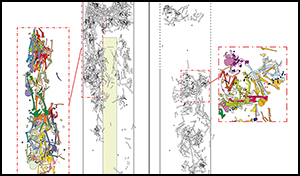Published online by Cambridge University Press: 20 January 2017

Megalithic or earth-cut chambered tombs containing large numbers of buried individuals are a key feature of the Late Neolithic of northern France. The discovery and analysis of one such tomb at Bury offers an exceptional opportunity to investigate changing burial practices during the fourth and third millennia BC. This was not a static monument: funerary practice changed significantly over time, and several different episodes of mortuary use have been identified. Comparing and contrasting these episodes suggests that there was no substantial change in the local population using the grave, but changes in burial practice reveal a shift towards more selective inclusion. These may reflect broader changes in contemporary society during the third millennium BC.